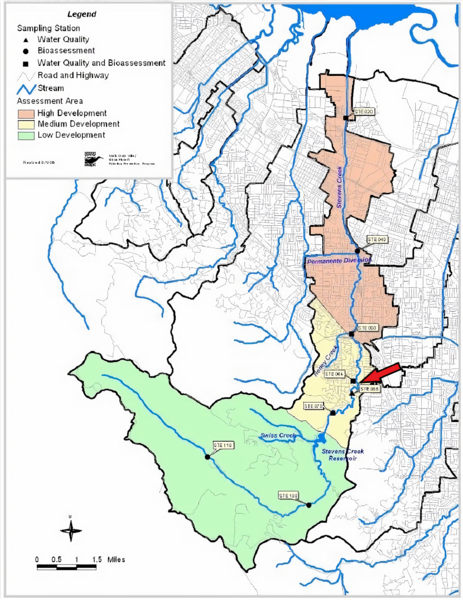The relationship between macroinvertebrates, water quality, and the health of Stevens Creek
(1) Monta Vista High School, (2) University of Texas at Arlington
https://doi.org/10.59720/20-230
Stevens Creek, which flows through Santa Clara County in California, provides a crucial habitat for federally designated threatened steelhead trout, with a portion of the trout’s diet being dependent on the presence and abundance of macroinvertebrates that inhabit the creek. This led to the formation of our research question: how the water chemistry within the creek was associated with the abundance and diversity of macroinvertebrates, and subsequently the creek’s health. We hypothesized that if the conditions within the creek were optimal for macroinvertebrate survival (specifically the pH range of 6.5-8.5), then there would be a higher abundance and diversity of macroinvertebrates found compared to areas of the creek with pHs outside of the aforementioned range. We conducted a qualitative analysis of macroinvertebrates and water quality to obtain a general understanding of the health of Stevens Creek. Macroinvertebrate sampling and water quality testing, including pH measurements, were carried out in two locations within Stevens Creek, with seven trials in each location. The overall total dissolved solids (TDS), as well as abundance and diversity of macroinvertebrates, between the two locations were found to be similar (not statistically significant), with pollution intolerant macroinvertebrates (Orders Ephemeroptera and Plecoptera) found within the 14 total trials, even though the pH was in the upper limit (8.4). These observations indicate that the portion of Stevens Creek sampled is likely to be healthy and relatively free from nonpoint source (NPS) pollution from the surrounding suburban area, boding well for the steelhead trout residing within it.
This article has been tagged with: